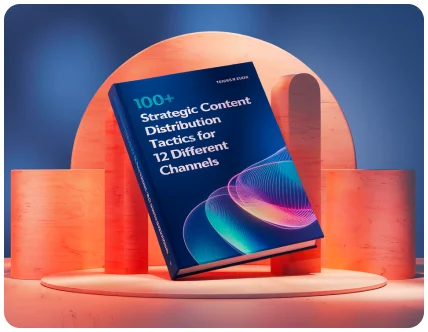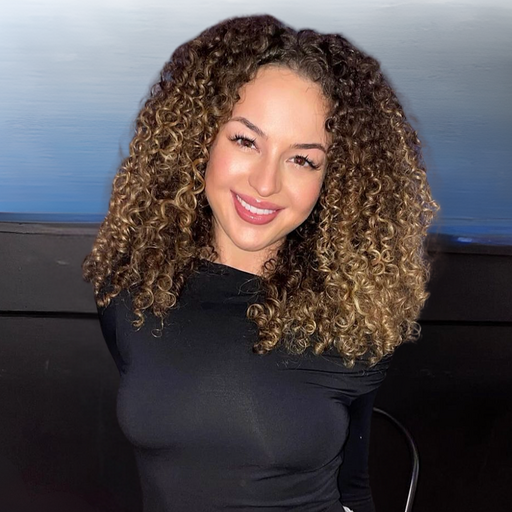Paid Distribution: Everything You Need to Know About Paid Media
Struggling to get your brand in front of the right audience? Paid distribution—also known as paid media—can be the key to boosting visibility, driving traffic, and increasing conversions. Whether you’re running an ecommerce store or a B2B service, paid media ensures your message reaches the right people at the right time. In this post, we’ll break down how it works and why it matters.

Are you struggling to gain more visibility for your business and build trust with potential customers?
Do you want to gain traction for your brand?
Are you wondering if there is an effective way to reach out to new audiences?
Is it worth investing in paid distribution?
These are the questions any smart marketer and creator should be asking. Paid distribution, also known as paid media, is a great way to get the results you want! No matter if you are running an ecommerce store or providing services in the B2B space, paid media can help you reach a wider audience and increase brand awareness.
In this blog post, we will explore what paid distribution is, how it works, and why it is key for acquiring new leads. We will also discuss how you can use paid distribution to save time and money, while boosting conversions. So, let’s dive in and learn everything about paid distribution!
What Is Paid Distribution?

Paid distribution is advertising that involves paying for media placements, such as ads or sponsored content, to guarantee immediate visibility to a specific audience on another channel. Results are measurable, which can be adjusted based on performance and budget constraints. Paid media can take on many forms, including display ads, social media ads, sponsored content, pay-per-click (PPC) advertising, and more.
In this blog post, we’re going to dive deeper into some of these different paid distribution channels so that you’re more familiar with the channels, techniques, and estimated costs that need to be vetted to get the most out of these channels. Let’s learn how you can increase visibility, drive traffic, and generate leads and sales sooner, on the back of paid efforts.
What Are the Alternatives to Paid Distribution?
Organic Distribution: Organic distribution refers to the natural, unpaid, and non-promotional reach of content.
- It relies on the quality and relevance of content to attract an audience.
- Typically, it involves methods like search engine optimization (SEO), social media sharing, and email marketing to engage and retain viewers.
- Growth is gradual and depends on audience interest and engagement.
- Take a look at The Skyscraper Technique!
Earned Distribution: Earned distribution relies on the endorsement and sharing of content by an external audience or influencers.
- It often occurs when content goes viral or gains recognition from industry experts.
- It can provide substantial reach and credibility.
- Success in earned distribution requires compelling and shareable content that resonates with audiences and influencers alike.
How Does Paid Distribution Work?

Paid media works by targeting specific audiences with highly relevant content. Advertisers can use various targeting criteria to reach the right people, which includes: demographics, interests, behaviors, and more.
When an ad is shown to a potential customer, they can click on it and visit the advertiser’s website.
If the customer takes the desired action, such as filling out a form or making a purchase, the advertiser pays a fee.
There are a variety of different pricing models for paid media, including cost per click (CPC), cost per thousand impressions (CPM), and cost per action (CPA). The pricing model you choose will depend on your goals and budget.
Why Use Paid Distribution In Your Marketing Mix?
Paid media can help brands reach their target audiences with relevant content and drive conversions. By understanding user behavior, advertisers can create campaigns that reach a wide audience, increase brand visibility, and generate sales.
Paid distribution can effectively increase visibility and drive traffic to your website and landing pages.
Here are some of the top reasons to use paid media:
1. Reach a Larger Audience
Paid media allows you to reach a larger audience than you can organically. By targeting specific demographics and interests, you can ensure that your content is being shown to people who are most likely to be interested in your product or service.
2. Increase Website Traffic
Paid media can help you drive more traffic to your website, leading to more leads and sales. Creating compelling ads and targeting the right audience can encourage people to visit your site and learn more about your offerings.
3. Improve Brand Awareness
Paid media can help you improve brand awareness by putting your brand in front of a larger audience. Even if people don’t click through to your website, they may still remember your brand and consider it in the future.
4. Test Different Messaging
Paid media allows you to test different messaging and see what resonates with your audience. By experimenting with different ad copy, images, and targeting criteria, you can optimize your campaigns and get better results over time.
5. Control Your Budget
With paid media, you can control and adjust your budget as needed, maximizing your ROI and getting the most out of your advertising spend.
How to Plan Your Paid Distribution Engine?
If you’re ready to use paid distribution to promote your brand or company, here are some of the things you will want to do before you hit the ground running and pay to reach your audience:
- Define Your Goals: Before investing in paid media, defining your goals is important. Are you looking to increase website traffic, generate leads, or boost sales? Once you have a clear idea of what you want to achieve, you can develop a strategy that aligns with your goals.
- Identify Your Target Audience: To get the most out of your paid media campaigns, you must target the right audience. Take the time to identify your target audience based on demographics, interests, behaviors, and other relevant criteria. This will ensure that your content is shown to people who are most likely to be interested in your product or service.
- Choose the Right Platform: There are many different platforms you can use for paid media, including Google Ads, Facebook Ads, LinkedIn Ads, and more. Consider which platforms are most popular with your target audience and which platforms are likely to give you the best results.
- Develop Compelling Ad Creative: Your ad creative is what will attract people’s attention and encourage them to click through to your website. Make sure your ad creative is eye-catching, relevant, and clearly communicates the value of your product or service.
- Test and Optimize: Once your campaigns are up and running, it’s important to continually test and optimize them to get the best results. Try experimenting with different ad copy, images, and targeting criteria to see what works best. Use the data you collect to make informed decisions about adjusting your campaigns.
Have the Right Metrics in Place and Know Exactly How to Track Each Channel

Once you have determined your paid media budget, it’s important to have the right metrics in place to track the performance of each channel. Here are some key metrics to track:
- Impressions: The number of times your ad is displayed
- Clicks: The number of times someone clicks on your ad
- Click-Through Rate (CTR): The percentage of people who clicked on your ad after seeing it
- Conversion Rate: The percentage of people who took the desired action on your website, such as filling out a form or making a purchase
- Cost per Click (CPC): The amount you pay for each click on your ad
- Cost per Acquisition (CPA): The amount you pay to acquire a new customer
To make the most of your paid media campaigns, having these metrics (the right metrics) in place and knowing how to track each channel, are essential.
This will allow you to measure the effectiveness of your campaigns and make data-driven decisions about optimizing them for maximum ROI.
After defining your key performance indicators (KPIs), set up tracking tools such as Google Analytics or Facebook Ads Manager to monitor your results in real time.
Regularly reviewing your metrics will help you identify areas where your campaigns are performing well and where they need improvement. For example, if your CTR is low, you may need to adjust your ad copy or targeting to better appeal to your audience.
Distribution Strategy: Remarketing Ads to Current Visitors

It is important to take advantage of remarketing ads in your paid distribution journey.
Remarketing ads allows you to target people who have already visited your website or engaged with your content. This can be a highly effective strategy, since these people have already shown an interest in your product or service. By targeting them with personalized ads, you can increase the likelihood that they will convert.

To implement remarketing ads, you must install a tracking pixel on your website to track visitor behavior. You can then create targeted ads based on that behavior, such as showing an ad for a specific product to someone who has already viewed that product on your website.
How to Pick the Right Ad Format for Distribution
Another important part to look at in paid distribution strategies, is the type of ad format you will use.
Different ad formats can be more effective for different types of campaigns and audiences. As an example, some brands are going to have more success with video ads that are run on YouTube, while others are going to find more success running static image ads on LinkedIn. The variables that go into your campaign’s success are not limited to just the creative, but also to your brand equity in the market and how familiar your audience is already with the value proposition of your offering or ad in general.
Here are some common ad formats to keep in mind:
- Search Ads: These are text-based ads that appear at the top of search engine results pages. Specific keywords trigger them and can be highly effective for driving traffic to your website.
- Display Ads: These visual ads appear on websites, often as banners or sidebars. They can be highly targeted based on demographics, interests, and behaviors.
- Social Media Ads: These ads appear on social media platforms like Facebook, Twitter, and LinkedIn. They can be highly targeted based on demographics, interests, and behaviors.
- Video Ads: These ads are typically short videos that appear on platforms like YouTube or other social media. They can be highly engaging and effective for building brand awareness.
Consider your goals and target audience when deciding which ad format to use. For example, video ads may be a good choice if you are trying to increase brand awareness. Search ads may be more effective if you are trying to drive traffic to your website.
It’s also important to clearly understand your target audience and the messaging that will resonate with them. This can involve conducting market research, creating buyer personas, and testing different messaging and targeting strategies to see what works best.
Another important consideration when allocating your paid media budget is the timing and duration of your campaigns. You may want to focus your budget on certain times of the year or specific events, such as product launches or industry conferences. You may also consider running your campaigns for a longer or shorter duration, depending on your goals and the performance of your ads.
Paid Distribution vs. Organic Distribution in SaaS
When it comes to promoting your SaaS product, there are two main ways to get your message out there: paid distribution and organic distribution.
Paid distribution involves paying for media placements, such as ads or sponsored content, to increase visibility and drive traffic to your website. This can include platforms like Google Ads, Facebook Ads, LinkedIn Ads, and other paid advertising channels.
Organic distribution involves promoting your product through non-paid channels, such as search engine optimization (SEO), social media, content marketing, and other strategies that don’t require a monetary investment.
While both paid and organic distribution can be effective strategies, there are some key differences to consider when deciding which approach to take for your SaaS company.
- Speed: Paid distribution can quickly boost traffic and visibility since you pay for placement in front of your target audience. In this case, organic distribution can take longer to build momentum and requires ongoing efforts to maintain.
- Control: With paid distribution, you have more control over the placement and targeting of your content, allowing you to reach specific audiences based on demographics, interests, and behaviors. With organic distribution, you have less control over who sees your content and when.
- Cost: Paid distribution requires a financial investment, while organic distribution is a more cost-effective approach. However, building and maintaining organic distribution requires significant time and effort, which can be a hidden cost.
- Reach: Paid distribution can help you reach a larger audience quickly, while organic distribution may require more time and effort to reach a comparable audience size.
It’s also worth noting that organic distribution can be a more sustainable approach in the long run, as it builds trust and credibility with your audience and can lead to more sustained growth over time. However, for SaaS companies looking for a quick boost in visibility and traffic, paid distribution can be an effective strategy to consider.
Wrapping Up
It’s important to consider both organic and paid distribution when developing a content strategy.
While paid distribution can be a quick way to reach a larger audience and boost visibility, organic content can be an effective way to build trust and credibility with your audience in the long run.
Ultimately, there isn’t one be-all and end-all strategy when it comes to content marketing—assessing what works best for you and your business is key.

100+ Strategic Content Distribution Tactics For 12 Different Channels
The Distribution Playbook
Get the best in distribution advice delivered to your inbox.
Built to solve the distribution problem.Loved by marketers

Honestly, I thought ‘how much better than ChatGPT can it be?’ I’ve used chat to repurpose some work and while it works, it takes too much tweaking — especially with getting it to extract themes. Distribution.ai does a great job at sectioning the thoughts, creating punch copy, and I really liked the brand voice.
”Lily Ugbaja
Head of Content Marketing

We don’t have to spend hours writing episode descriptions any more. We can use this to craft all the copy we need to upload our podcast episodes
”A. Canta

We can now create 10 social media posts for clients in the matter of minutes. This AI is an absolute game changer.
”L. Henderson

We uploaded a blog post it created 10 social posts, we scheduled them over 3 months and the referral traffic skyrocketed.
”T. Perry